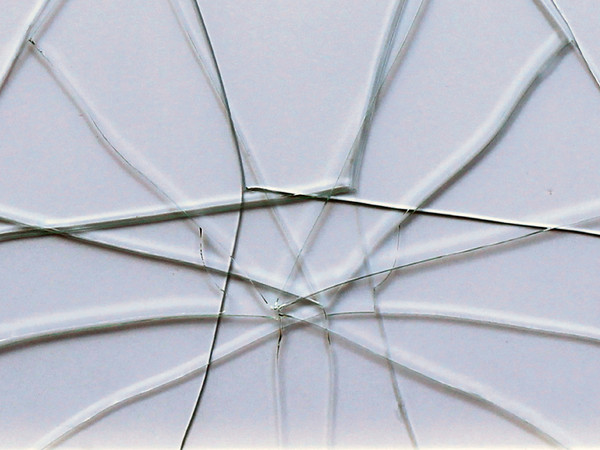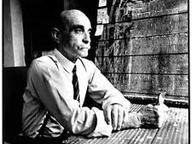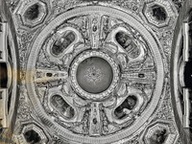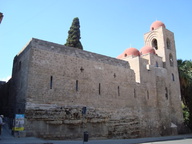Andrea Francolino. Intra materia Natura infinita

Andrea Francolino, Caso x Caos x Infinite variabili (dettaglio)
From 22 Novembre 2018 to 19 Gennaio 2019
Milan
Place: Spazio Aperto San Fedele
Address: via U. Hoepli 3A
Times: Tuesday – Saturday 4:00 – 7:00 PM (mornings by appointment) closed on Sundays, public holidays and 7 December and from 21 December to 7 January 2019
Responsibles: Bettina Della Casa
Organizers:
- Regione Lombardia
Telefono per informazioni: +39 02 86352 233
E-Mail info: sanfedelearte@sanfedele.net
Official site: http://www.centrosanfedele.net/
After having participated in and winning the 2014 edition of the Premio Artivisive San Fedele, Andrea Francolino (Bari, 1979) is presenting in the spaces of the Centro San Fedele a solo show entitled Intra materia Natura infinitadedicated to the idea of the crack, the fracture, the wound. This reflection transversally explores diverse disciplinary forms with the freedom that only an artist may allow themselves: aesthetics, ethics and ecology are taken up as the areas of investigation of choice.
In Francolino’s research the crack – in the form of spatial interventions or two-dimensional works involving multiple elements – becomes pivotal in assigning contrasting meanings such as chance and necessity, void and solid, past and future, dry stone walls and ruins. By way of installations composed of earth, cement, gold leaf and glass, Francolino activates a device capable of transforming dry stone walling, a stain, a gap into a fragment, a relic, a ruin: the crack becomes under his demiurgic gaze a carrier of meaning and hope, a promise of a future.
How does this transformation come about? Certainly, not every crack in the built environment, not every fracture in an object has the status and dignity of a ruin. It is not sufficient that the original function has been corrupted, nor that there is simple failure of an original configuration, rather the fragment must have the upper hand over the built environment, the absence evoked be more intense than the material presence, the wound give onto a void that is impregnated with meaning. The crack must open to infinite possibilities of future.
By precisely which means is the void emphasised in the artist’s works? The variation of solid and void, albeit in the plurality of the media employed, succeeds in the intention of conferring harmonic dynamism to the image and allowing the absence to vibrate. The void Francolino presents is physical, even metaphysical, but also psychological and interior: it is capable of framing passions and states of mind. Balanced between secret interior reflection, meditation on history and awareness of the present, the wound finally redeems itself from the image of pain and failure. The artist overturns the cliché by showing us the void that shines through the fracture as an opening to new possibilities, a plurality of possible potentialities. Charged with its own environmental and existential Sittlichkeit, or ethical order, Francolino’s research reminds us that everything can change from one moment to the next, that have been and will be different and that this vulnerability may actually prove to be a strength. The essential condition is however that the necessary passages are authentically explicated: the dry stone becomes ruin, the solid reveals the void, the wound is not concealed.
Moreover, there is a fundamental attention to the ecological dimension in Francolino’s work: both theunpredictable forces of nature and the nefarious results of technology contribute to a compromising of the equilibrium, annulling every distinction between the causes. It is in very act of exhibiting the wound of nature, of not concealing it in any way from the human eye that it finds its strength and transmits it to the observer. Its vulnerability helps to place the individual in time, to maintain memory and continuity between temporal intervals that, in the contemporary present, all too often appear isolated.
In Francolino’s research the crack – in the form of spatial interventions or two-dimensional works involving multiple elements – becomes pivotal in assigning contrasting meanings such as chance and necessity, void and solid, past and future, dry stone walls and ruins. By way of installations composed of earth, cement, gold leaf and glass, Francolino activates a device capable of transforming dry stone walling, a stain, a gap into a fragment, a relic, a ruin: the crack becomes under his demiurgic gaze a carrier of meaning and hope, a promise of a future.
How does this transformation come about? Certainly, not every crack in the built environment, not every fracture in an object has the status and dignity of a ruin. It is not sufficient that the original function has been corrupted, nor that there is simple failure of an original configuration, rather the fragment must have the upper hand over the built environment, the absence evoked be more intense than the material presence, the wound give onto a void that is impregnated with meaning. The crack must open to infinite possibilities of future.
By precisely which means is the void emphasised in the artist’s works? The variation of solid and void, albeit in the plurality of the media employed, succeeds in the intention of conferring harmonic dynamism to the image and allowing the absence to vibrate. The void Francolino presents is physical, even metaphysical, but also psychological and interior: it is capable of framing passions and states of mind. Balanced between secret interior reflection, meditation on history and awareness of the present, the wound finally redeems itself from the image of pain and failure. The artist overturns the cliché by showing us the void that shines through the fracture as an opening to new possibilities, a plurality of possible potentialities. Charged with its own environmental and existential Sittlichkeit, or ethical order, Francolino’s research reminds us that everything can change from one moment to the next, that have been and will be different and that this vulnerability may actually prove to be a strength. The essential condition is however that the necessary passages are authentically explicated: the dry stone becomes ruin, the solid reveals the void, the wound is not concealed.
Moreover, there is a fundamental attention to the ecological dimension in Francolino’s work: both theunpredictable forces of nature and the nefarious results of technology contribute to a compromising of the equilibrium, annulling every distinction between the causes. It is in very act of exhibiting the wound of nature, of not concealing it in any way from the human eye that it finds its strength and transmits it to the observer. Its vulnerability helps to place the individual in time, to maintain memory and continuity between temporal intervals that, in the contemporary present, all too often appear isolated.
SCARICA IL COMUNICATO IN PDF
COMMENTI

-
 Dal 31 gennaio 2024 al 04 maggio 2025
Fermo | Palazzo dei Priori
Dal 31 gennaio 2024 al 04 maggio 2025
Fermo | Palazzo dei Priori
-
 Dal 20 dicembre 2024 al 04 maggio 2025
Fermo | Palazzo dei Priori
Dal 20 dicembre 2024 al 04 maggio 2025
Fermo | Palazzo dei Priori
-
 Dal 20 dicembre 2024 al 04 maggio 2024
Gorizia | Palazzo Attems Petzenstein
Dal 20 dicembre 2024 al 04 maggio 2024
Gorizia | Palazzo Attems Petzenstein
-
 Dal 18 dicembre 2024 al 18 dicembre 2024
Venezia | Museo Correr
Dal 18 dicembre 2024 al 18 dicembre 2024
Venezia | Museo Correr
-
 Dal 14 dicembre 2024 al 02 marzo 2025
Palermo | Palazzo Abatellis
Dal 14 dicembre 2024 al 02 marzo 2025
Palermo | Palazzo Abatellis
-
 Dal 12 dicembre 2024 al 23 febbraio 2025
Roma | Palazzo Altemps
Dal 12 dicembre 2024 al 23 febbraio 2025
Roma | Palazzo Altemps


